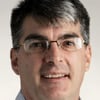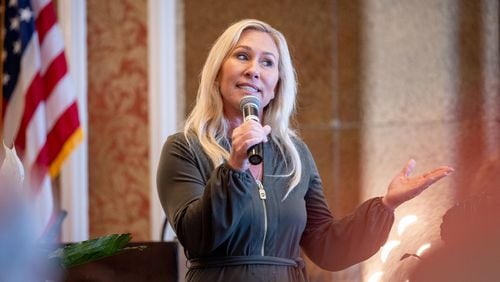Paul Casey was playing with a marker on Saturday. He nearly shot the Masters course record on Sunday.
Casey missed the record of 63 after trouble on the final two holes.
Casey made the cut at the number, 5-over par, after the first two rounds of the 2018 Masters. Going out first, with a non-competitive marker, he shot a 3-under 69 in the third round.
Casey shot 3-under on the front nine of the fourth round Sunday. The course record became a real possibility when Casey shot 6-under par between hole Nos. 11-15 with four birdies and an eagle. Casey just needed to par the final three holes to tie the record of 63, established by Nick Price in the third round in 1986 and Greg Norman in the first round of 1996. One birdie on the closing holes could have set the mark. Casey got the par at No. 16. However, he bogeyed Nos. 17 and No. 18 to miss history.
Casey went from making the weekend at 5-over to 2-over going into the final round to 5-under for the tournament and tied for 15th-place finish.
“That was fun, wasn’t it?” Casey said. “Birdie, birdie eagle on Amen Corner, I'm going to remember that for a long time. I'm obviously disappointed. I got out of position horribly on 17 and 18 which was kind of reminiscent of how I played this week. Haven't been very good until that streak today. But to shoot 65 today, it would have been hard to turn that down. And it was fun thinking, I was fully aware of what was going on.”
Simpson has back-to-back eagles
Webb Simpson became the fourth player in Masters history to record back-to-back eagles. Simpson recorded the 2-under pars on Nos. 7 and 8 during the final round of the 2018 Masters on Sunday.
Simpson holed out from the fairway on the par-4 7th from 166 yards. He eagled the par-5 8th hole with a chip-in from 20 yards off the green.
Simpson joins Phil Mickelson in 2010, Dustin Johnson 2009 and Dan Pohl in 1982. All three eagled Nos. 13 and 14.
Simpson started the final round at 3-over par. He shot a 31 on the front nine with the help of the eagles. Simpson shot 5-under par in the final round and finish 2-under for the tournament.
Woods is back
Tiger Woods ended his two-year hiatus from the Masters with score of 1-over par for the tournament. Woods started his final round at 4-over par. He got back to even after a birdie on the 17th but bogeyed the final hole to finish over par for the week.
Woods’ final round included an eagle at the 15th.
“I felt I hit it well enough off the tee to do some things, but I hit my irons awful for the week,” Woods said. “I did not putt well today. I three‑putted 7 and three‑putted 18 there. I didn't put it together when I needed to for the entire week.”
It had been 1,089 days since Woods played his last round at the Masters before this week as he battled injury including to spinal fusion surgery. Back to do more than eat at the Champions Dinner, the four-time champion missed competing for major titles.
“Now to be able to play this golf course and to be able to tee it up and play in the Masters, this is one of the greatest walks in all of golf,” Woods said. “And I had missed it for the last couple of years, I hadn't been able to play in it. So now I'm glad I'm competing in this tournament. And to face the challenges out there. I missed it. I really did. I missed playing out here.”
Mickelson finishes strong
Phil Mickelson ended with a final-round 5-under 67 to finish at 2-over par. Well out of contention after making the weekend on the cut line, Mickelson had the third tee time of the day Sunday.
“Yeah, it was better but it's never easy to be out here knowing what you're missing out on with that back nine here Sunday at the Masters and not having a chance,” Mickelson said. “It's difficult because you know what you're missing out on and you know what special things happen on that back nine, how fun it is to be a part of it, be in the mix.”
Hole-in-one Hoffman
Charley Hoffman made the 20th ace ever at No. 16 on Sunday.
He just went about it the wrong way.
With the pin on the traditional left side of the green, most players hit to the right and have the ball trickle down toward the hole. Hoffman came in from the opposite direction.
"It's a hole that you know that you can make an ace on, but most people don't pull it and bounce it off the top of the bunker and come in from the left‑hand side," Hoffman said. "It wasn't the perfect shot I was looking for, but somehow it just carried the bunker and took a right and went in the hole. I mean it's a great experience and a great feeling and it's something you're thinking on that hole but not the way I did it."
About the Author






